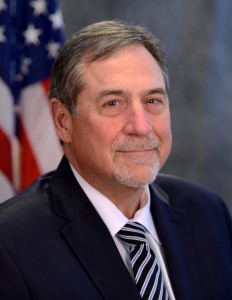
‘Complexity’ of 2020 census redesign raises red flags
The Census Bureau is gearing up for the 2020 count. Bureau officials say they're hitting milestones thanks to recent software decisions and the hiring of certai...
Is the 2020 census on time and on schedule, or is it a “disaster waiting to happen?
That depends on who you ask.
During a June 9 House oversight hearing on the Census Bureau’s readiness for the 2020 decennial census, officials with the bureau and Commerce Department tried to assure members that thanks to a modernized way of collecting and processing information — through the Census Enterprise Data Collection and Processing (CEDCaP) effort — the next count would be cheaper and more efficient.
“CEDCaP is delivering some key capabilities for the 2020 census,” said Census Bureau Director John Thompson. “The 2020 census has other capabilities it has to deliver in addition to some of these key systems that CEDCaP is delivering, so there’s a natural overlap. We’re counting very heavily on CEDCaP to be successful and it is delivering some key systems for 2020, but 2020 has some of its own systems that it has to deliver.”

Thompson said the redesign can save $5.2 billion. The bureau requested $1.6 billion for fiscal 2017, and $778.3 million for the 2020 census.
“We have a very detailed schedule for the 2020 census, we have a very detailed schedule for CEDCaP. For the items that are overlapping, the schedules meet,” he said. “We are going to an enterprise, as opposed to building all these independent systems that will cost more money. Where they overlap, the schedules are in sync. There are detailed schedules, we monitor them and we put out the schedules, we put out the schedule for making decisions, we’re meeting those decisions on time when we should be making them.”
But auditors at the Government Accountability Office say the lofty goals for the bureau coupled with a tight time frame mean a very slim margin of error.
Carol Harris, director of information technology and acquisition management issues at GAO, said given the CEDCaP program’s nature as a “system of systems initiative,” the best thing the bureau can do is to reduce the complexity and scope of the initiative if it has any hope of meeting testing deadlines.
Harris explained in her testimony that 11 of 12 projects under CEDCaP are in various stages of planning and design, with 17 solutions planned for delivery.
Asked by Rep. Jason Chaffetz (R-Utah), chairman of the oversight committee, whether she thought the bureau was on schedule, she said the short answer was no.
No schedule has been determined for those 17 solutions, Harris said, “So I don’t think the bureau is in a position to say that they are on schedule, because that implementation schedule is a critical component of the CEDCaP program, and until that schedule is defined, I think they’re in a difficult position to say they’re on time and on schedule.”
Harris pointed out that the most recent decision to buy commercially off the shelf (COTS) software for CEDCaP now requires another schedule defined by the vendor [Pegasystems], and until that comes out, it’s hard to say the bureau is not falling behind.
But Thompson defended the build vs. buy decision. The COTS platform will be combined with input from census experts, creating a hybrid, Thompson said. And while there might be a new time and new costs to consider, there’s — you guessed it — a schedule.
“So you have scheduled to develop the schedule, but you say you’re on schedule,” Chaffetz said.
Preparing for disaster?
Staying on schedule was at the heart of the the oversight hearing, because a number of milestones need to be hit before 2020.
Along with the 2018 End-to-End Census Test, the Census Bureau will also be finishing up work this year and in 2017 on risk management and data security.
“The top risk we face is cybersecurity and we’re doing a lot on cybersecurity,” Thompson said when asked about the top three risks to mission. “Another significant [risk] we face which we admit today is maintaining adequate resources and funding to build the systems. And the third biggest risk we have to mitigate is making sure all the systems are integrated together. Which is why our 2018 End-to-End test is so critical.”
At nearly $13 billion, the 2010 Census was the most expensive count in U.S. history, and it cost the bureau $100 per household.
“If adequate funding is not received in FY2017, we will have to reprioritize activities to ensure that the 2018 End-to-End Census Test and 2020 enumeration will take place on time,” Thompson said. “If we have to defer activities, the cost of the census will increase.”
Commerce Department Chief Information Officer Steven Cooper highlighted some recent steps to fortify the bureau’s cyber defenses. Included in that list is the hiring of Kevin Smith as the new associate director for information technology and chief information officer at the Census Bureau.
Cooper said Commerce is working with other agencies and law enforcement to ensure it’s implementing things like Homeland Security’s EINSTEIN program, and using a “layered, in depth set of defenses” so that data is encrypted when it is at rest, in transit and moving from one environment to another.
“That helps us significantly improve our cyber capabilities against any possible breach that might actually access data,” Cooper said. “We’ve taken steps to minimize the likelihood of any data breach of census data because the repositories of census data are not internet accessible. They are isolated from the internet. That significantly reduces the operational threat from bad actors.”
Rep. Gerry Connolly (D-Va.) asked what Census was doing to protect against phishing scams in light of the fact the public can use the internet to respond to the 2020 survey.
Thompson said a contract is being awarded this summer for a “substantial communications program” that will include public education.
Rep. Mark Meadows (R-N.C.) wanted to know what percentage of technology had been procured to date, and Cooper said about “50 percent of the decisions needed to be made” have been made.
“Here we are, about to do end-to-end testing, in a year and a half, and we’ve made 50 percent of the decisions,” Meadows said. “Let me tell you that’s a disaster waiting to happen.”
Copyright © 2024 Federal News Network. All rights reserved. This website is not intended for users located within the European Economic Area.




